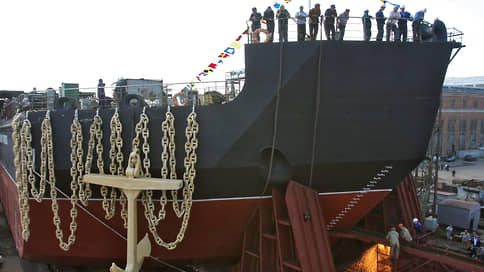Rosatom may install another floating nuclear power plant in Chukotka
[ad_1]

As Kommersant found out, Rosatom may install another floating nuclear power plant in Chukotka to cover the growing demand of industrial electricity consumers. Rosatom is already building four power units for the Baimsky Mining and Processing Plant; the fifth station can be installed in Pevek next to the first floating nuclear power plant, Akademik Lomonosov. The region will need new generation to replace the old coal-fired power plant after 2027, given that the construction of new coal units in the Far North, according to analysts, will be too expensive and time-consuming.
Rosatom is considering the issue of supplying an additional modernized floating nuclear power unit (FPU) in Pevek, the state corporation told Kommersant. They noted that the request came from the Chukotka administration. “The study of the problem is at a very early stage, we cannot yet announce the technical and economic parameters, the decision to implement the project has not been made,” noted Rosatom. The company emphasized that energy supply to a growing number of industrial consumers requires comprehensive solutions, including expansion of the electrical grid complex.
JSC Chukotatomenergo (part of Rosatom) and the government of Chukotka in September at the Eastern Economic Forum concluded a memorandum on the issue of studying the feasibility of energy supply to investment projects in the region using power plants, taking into account the importance of reducing harmful emissions. The press service of the Chukotka government told Kommersant that elaboration of the issue is at an early stage.
The Chukotka energy system consists of three isolated energy centers: Chaun-Bilibinsky, Anadyrsky and Egvekinotsky. The installed capacity of the entire energy system is 334 MW. The power plants of the energy system generated approximately 818 million kWh in 2022. Most power plants run on coal, gas and diesel fuel.
Rosatom already has a firm order for the construction of four 420 MW power plants in the Chaun-Bilibino energy hub. The state corporation will supply power units based on RITM-200 reactors at Cape Nagleingyn to supply power to the Baimsky copper-gold mining and processing plant, which is expected to be launched in 2027. In addition, since 2020, the floating nuclear power plant “Akademik Lomonosov” has been operating in Pevek using KLT-40 reactors. The installed capacity of Akademik Lomonosov is 70 MW, but the station has not yet reached its available capacity due to identified defects in the steam generator pipe system. Now a second reactor plant is in operation, which carries a load of more than 20 MW, Rosatom told Kommersant. By the end of 2023, it is planned to complete the planned repairs to replace the removable (internal) devices of two steam generators at the first power unit; in 2024, repairs of three steam generators at the second unit are planned. By 2025, the station will reach a capacity of 70 MW, Rosatom says.
The Chaun-Bilibino energy center is the fastest growing in the Chukotka energy system. In 2022, consumption in the energy hub increased by 11.2%, to 377 million kWh, as follows from the regional energy development scheme and program (S&P). Annually, consumption in the moderate scenario will grow by an average of 13%, reaching 715 million kWh by 2027. In an optimistic scenario, the figure will reach 792 million kWh by 2027. The main consumers of the region are existing and promising deposits of gold and silver.
In the coming years, the Chaun-Bilibino energy hub will need new generation to replace outdated power plants, it follows from the CIP. In 2025, Rosatom will close the Bilibino NPP (36 MW). RusHydro plans to close the outdated 30 MW coal-fired Chaunskaya CHPP after 2027 and is considering replacing it with the “construction of a new Arctic thermal power plant in Pevek” with a total capacity of 75 MW, the CIP says. Commissioning of the first 25 MW power unit is possible in 2026, the second in 2027, and the third in 2029. RusHydro told Kommersant that they have begun designing a new coal station, which will be located 5–6 km from Pevek. They noted that the thermal power plant will be equipped with electric precipitators that will capture 99.6% of ash particles. The holding did not disclose the cost of the thermal power plant and sources of financing for the project.
The Chukotka energy system is located in extreme climatic conditions, so the main limitations of any generation construction project there are related to speed and, in principle, the possibility of implementing new facilities, says Sergei Rozhenko from Kept. Materials and equipment can be delivered to Chukotka only in the summer during the navigation period. Against this background, a floating power plant, the construction of which mainly takes place at the shipyard, could be a good alternative, the analyst notes. According to his assessment, the current global standard for capital costs for the construction of a coal-fired thermal power plant is at the level of $2-3 thousand per 1 kW, but in the conditions of Chukotka, the costs of building a small unit can be three to four times higher.
[ad_2]
Source link





